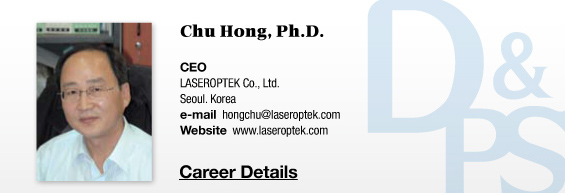The most prominent topic of the 2000s in the field of aesthetic laser was the theory of fractional photothermolysis proposed by Rox Anderson in 2004. This theory can be said to complete the theory of selective photothermolysis proposed in 1983. According to the theory of fractional photothermolysis, selective damage of the skin accelerates the healing process with the help of undamaged skin tissues. As the target chromophore of the dermis is water, it can also cause dermal remodeling. Fractional lasers can be divided into ablative and nonablative types. Fractional ablative lasers include CO2 and Er:YAG lasers. These two lasers were known as the gold standard in ablative resurfacing in the 1990s before the introduction of the fractional concept. However, clinical data showed that resurfacing with these devices caused a long down-time and side effects such as hyperpigmentation, etc., which led to research of nonablative laser. In 1999, a nonablative 1320nm Nd:YAG laser that induces dermal remodeling was developed. This contributed to the birth of Fraxel (Er:Glass fiber Laser, wavelength:1550nm), the first fractional nonablative laser that swept the aesthetic market from the mid 2000s. FDA approval of Fraxel in 2005 was followed by 1440nm Nd:YAG laser and diode laser, etc. which led to introduction of fractional ablative laser. From the late 2000s, fractional CO2 laser and Er:YAG laser are commonly used in treatment of scar, wrinkles and skin rejuvenation, however, there is paucity of objective clinical assessment or in vivo data on delivery depth (resurfacing depth). The depth of laser delivery varies depending on the fluence and patient skin conditions and this makes producing objective data difficult. I hope more clinical studies are conducted in this regard to provide important data for predicting efficacy and treatment outcome.
HELIOSⅡ/LOTUSⅡ/HYPERION – Manufacturer: LASEROPTEK(www.laseroptek.com)
Starting in the mid 2000s, a great deal of effort is given to developing minimally invasive laser systems for fat removal and body contouring/tightening. Lasers used in this endeavor include 1064nm, 1320nm, and 1440nm Nd:YAG laser, 920nm, 980nm diode laser. The most potent lipolytic Nd:YAG (DEKA, Italy) was approved by FDA in October 2006. It was soon followed by lypolytic lasers developed by Cynosure of the US and seven other manufacturers. Around this time, Korean doctors started to combine liposuction and lipolytic procedures. As presented in <Table 1>, silicon laser was developed in the 2000s. Silicon lasers are wideband in the range of infrared light, has low production cost, and has a simple structure that can be manufactured in a very small device. Currently, its application is limited due to low output but I expect this new type of laser to be used as in medicine in the future.

Table 1. History of laser development in the 2000s.
-To be continued





















